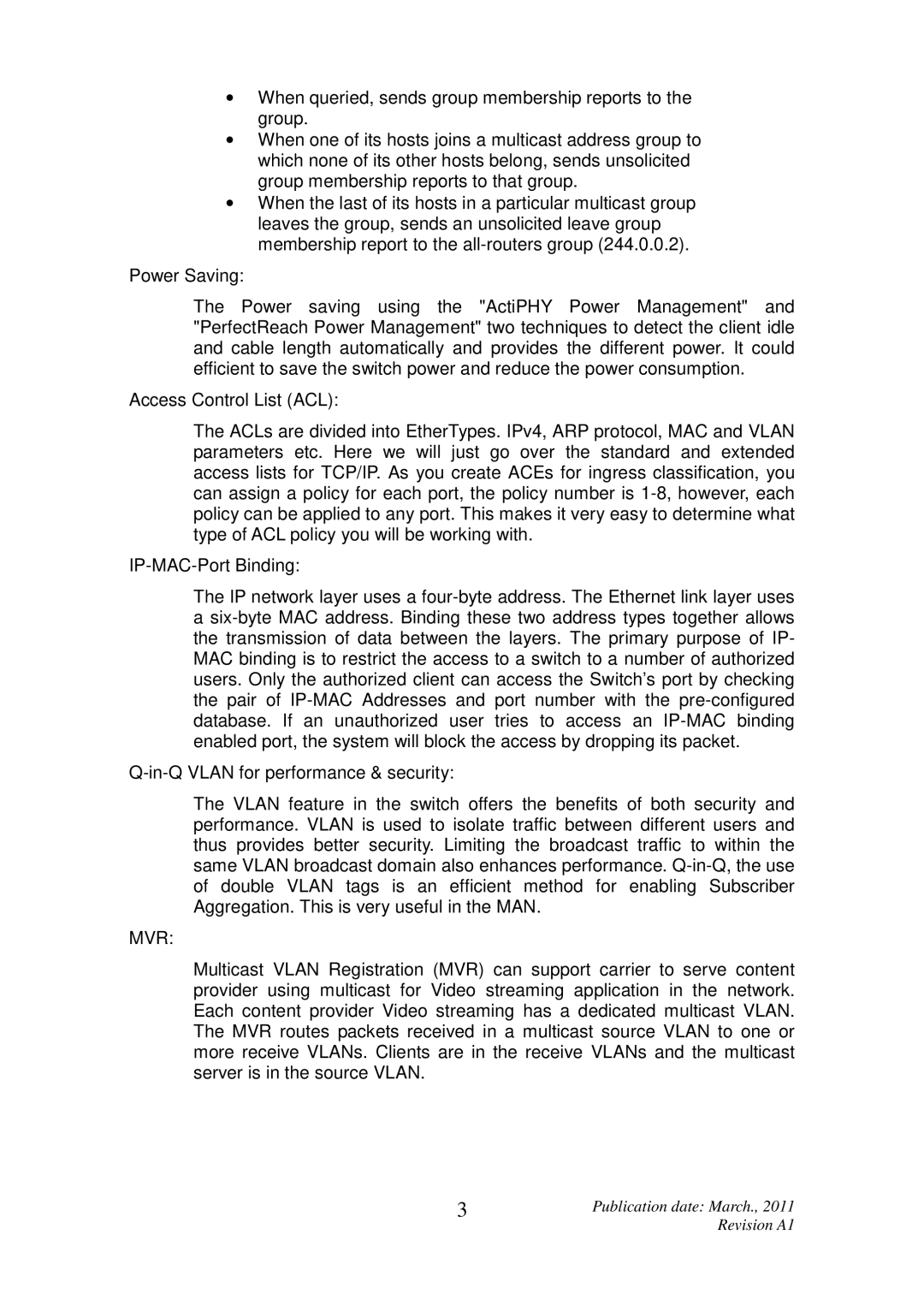∙When queried, sends group membership reports to the group.
∙When one of its hosts joins a multicast address group to which none of its other hosts belong, sends unsolicited group membership reports to that group.
∙When the last of its hosts in a particular multicast group leaves the group, sends an unsolicited leave group membership report to the
Power Saving:
The Power saving using the "ActiPHY Power Management" and "PerfectReach Power Management" two techniques to detect the client idle and cable length automatically and provides the different power. It could efficient to save the switch power and reduce the power consumption.
Access Control List (ACL):
The ACLs are divided into EtherTypes. IPv4, ARP protocol, MAC and VLAN parameters etc. Here we will just go over the standard and extended access lists for TCP/IP. As you create ACEs for ingress classification, you can assign a policy for each port, the policy number is
The IP network layer uses a
The VLAN feature in the switch offers the benefits of both security and performance. VLAN is used to isolate traffic between different users and thus provides better security. Limiting the broadcast traffic to within the same VLAN broadcast domain also enhances performance.
MVR:
Multicast VLAN Registration (MVR) can support carrier to serve content provider using multicast for Video streaming application in the network. Each content provider Video streaming has a dedicated multicast VLAN. The MVR routes packets received in a multicast source VLAN to one or more receive VLANs. Clients are in the receive VLANs and the multicast server is in the source VLAN.
3 | Publication date: March., 2011 |
| Revision A1 |
